Repurposing Food: How to Make Your Own Natural Dyes
For months we have been working on creating some new and unique, handmade bags, and recently purchased a bunch of 100% organic cotton zippers to complete them. We wanted to add some color to make them pop, and were inspired to create our own natural dyes because of our promise to be kind to the earth. To keep it easy, we used things on hand in our kitchen, and probably in yours, too!
Based on the fair trade textiles I've been working with this month, I wanted to create a grey dye and a yellow dye. After consulting Google I chose blackberries to create the grey shade and turmeric for the yellow. I happened to have *a lot* of both of these on hand because I am a sucker for the anti-inflammatory properties of turmeric and my kid goes crazy for blackberries. In fact, he was pretty upset when he saw the pot of them boiling away on the stove. Sorry, bud.
This is super easy, fun, and the results are beautiful. Now I can't stop dreaming up ways we could incorporate more natural dyes into our handmade surfboard bags and other fair trade bags. Decisions, decisions.
A few things to consider before you start:- Choose your fabric. It turns out cotton is one of the easier fabrics to dye naturally, so if you're a beginner this is a good place to start.
- Expect variation in color depending on the amount of material (in this case, blackberries and turmeric) you use and how long you leave the fabric in the dye itself.
- You will need a fixative, which is key to helping the fabric hold the dye well, and which you can easily make yourself. You'll soak your fabrics in this for at least an hour before you dye them. I used a salt-based fixative, which works well for fruits especially. Scroll down for the how-to!
Steps:
1. Mix up your salt fixative. I used 1/4 cup of salt and 4 cups of water, as I was only testing a few zippers so didn't need much liquid. If you were dyeing larger quantities you would just add another 1/4 cup of salt for every 4 cups of liquid. What you're supposed to do: Add salt and water to a pot and bring to a boil, stir to dissolve at least most of the salt. Add your fabric and reduce heat to simmer for one hour. What I did: Don't read directions and just put the salt and your fabric and cold water in a bowl for two hours. Whether or not you read directions, remove fabric and rinse with cold water.
2. While your fabric is soaking, create your natural dye bath. Again, based on the amount of material you use and how long you dye your fabrics for, you will achieve varying depth of color. I loved using natural dyes because it allows you to experiment; there are plenty of recipes out there, so have fun with it. For my dye baths I used:
- Blackberry dye: One small container of blackberries (about one cup) and two cups of water. Keep in mind that I knew I was only dying a few zippers, so I didn't need much liquid. If you're dying anything much heftier you will definitely want to double or triple up on this recipe.
- Turmeric dye: Two tablespoons of turmeric and two cups of water. *Again, I was only dyeing a small amount of fabric.
Mix your blackberries/turmeric with the water in a pot on the stove. I used one ceramic and one stainless steel and both worked well.
3. Bring dye mixture to a simmer. Now, here is where you can have some more fun and experiment. Different recipes dictate different simmering times, and some advise boiling while others don't. I ended up bringing both pots to a boil (on accident, thanks to my toddler) and then reduced to simmer. You have two options at this point:
- Add your fabric to the dye and let it gently simmer in the dye bath (at least an hour for blackberries and at least half an hour for turmeric). This method helps you to achieve a richer color more quickly. Because I am a forgetful person with a maniac toddler running around who makes me more forgetful, I opted for the below option.
- As stated, this option takes longer but works well if you don't have hours to stand at the stove. Let your dye simmer for the amount of time listed above and then remove and pour into a nonreactive container (first drain and remove blackberries from the dye). Glass, stainless steel or ceramic will do the trick. Add your fabrics and let sit. For as long as you want. Yep. So easy. My zippers ended up in the dye for two and a half days after we went to Pasadena overnight and I forgot about them. So if you like the color I achieved then that's the timetable you're working with. Most recipes state that 24 hours gets the job done.
5. Remove your fabrics, rinse with cold water (you can use a gentle soap if you like, nothing stronger than Woolite) and lay outside to dry. Our blackberry-dyed fabric looked the same wet and dry, while the turmeric-dyed fabric faded into a paler yellow once it spent some time in the sun (see photos above). Voila! You're ready to make something beautiful.
*You don't need to waste the leftover dye. Simply put it in your refrigerator and it will keep for a couple of weeks.
Please stay tuned to see what we're working on, and check out our handmade surfboard bags at our new space inside your favorite urban surf shop, Atacama Surf Shop at 1114 North Coast Highway, Suite 10, Encinitas, California, 92024.

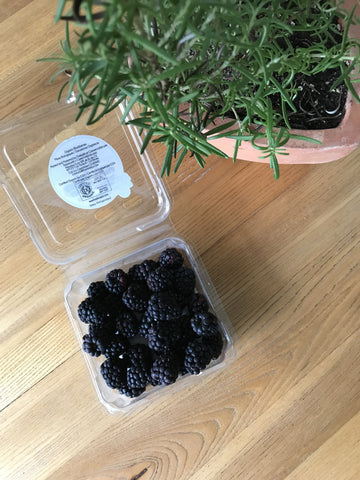
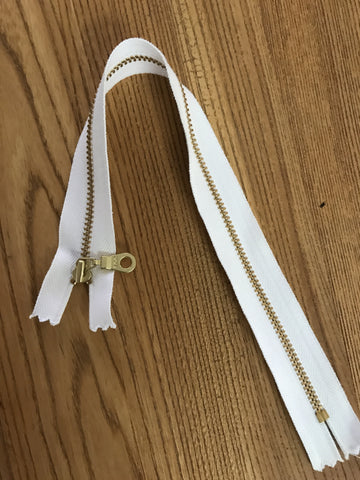
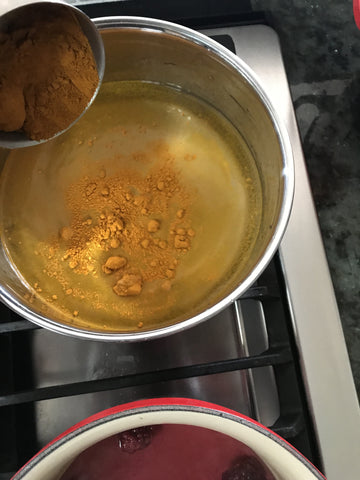
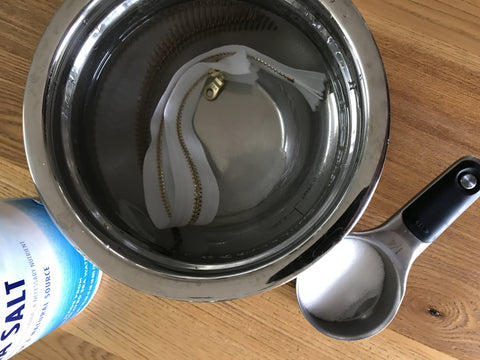
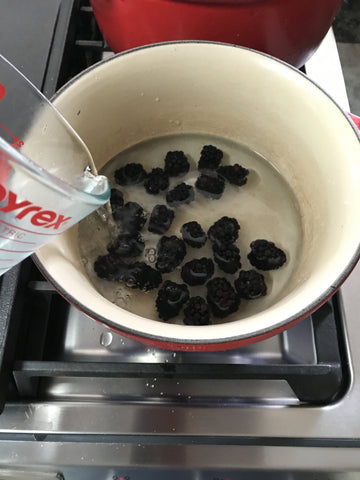
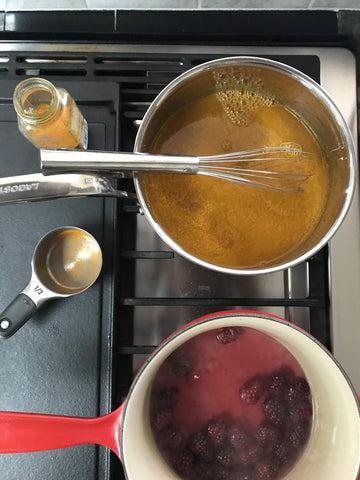

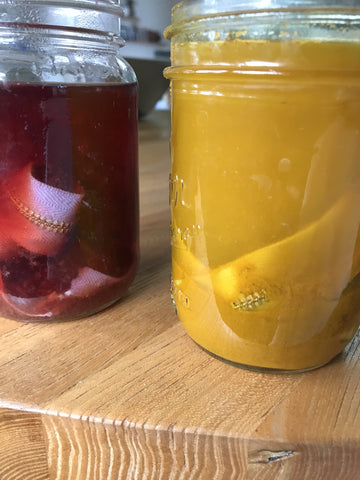
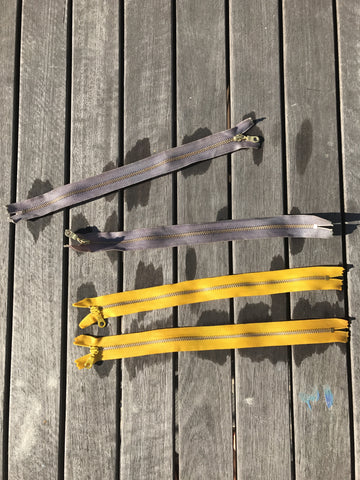
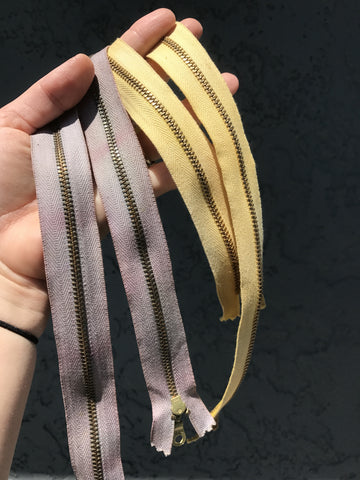
1 comment
Of all the natural dye articles out there, yours is the only one to tell me how to store tge left overs! I am only using the dyes to tint lip balm at the moment so I don’t want to waste perfectly good dye! I am using silicone molds to freeze large left over batches but it is nice to know if I thaw, I need to use relatively soon or if I separate a portion, I need to refridgerate and use soon too. Thank you so much!